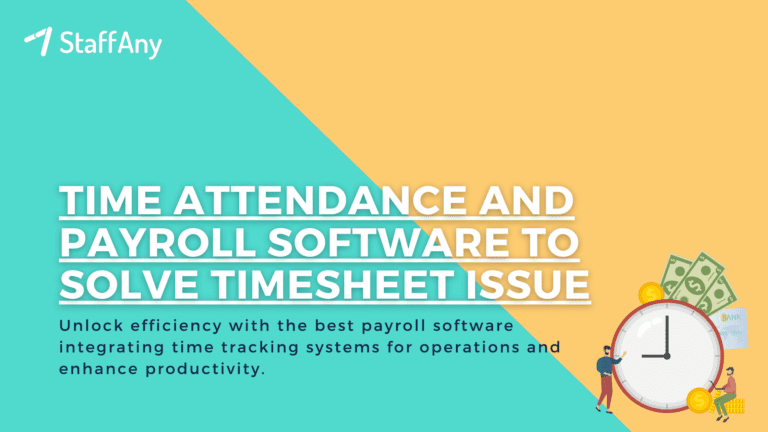Employee retention stands as a cornerstone of organisational stability and growth. It refers to the ability of a company to keep its employees engaged, satisfied, and committed to their roles over an extended period. High employee retention is a clear indicator of a healthy work environment, where employees find value in their contributions and feel motivated to continue contributing to the company’s objectives.
In this article, we will delve into the depths of what is employee retention, exploring its benefits, underlying causes of high employee turnover, and the best strategies to enhance retention rates. Let’s get started!
What is Employee Retention?

Employee retention encompasses various aspects that contribute to the longevity of a working relationship between an employer and an employee. It’s not just about retaining employees; it’s about retaining the right ones. It involves nurturing a workplace culture that promotes job satisfaction, professional growth, and a sense of belonging. This involves creating an environment where employees feel valued, heard and acknowledged for their contributions.
Read more: 13 Effective Employee Retention Programs to Keep Your Best Talents
Benefits of Employee Retention
Now that you understand what is employee retention, you must learn the many advantages it can bring to businesses. Here are seven key benefits that underscore the significance of retaining your workforce:
1. Enhanced Productivity
Employees who stay with a company for a prolonged period become intimately familiar with its operations, procedures, and objectives. This depth of knowledge translates into heightened efficiency and productivity. Long-term employees can navigate tasks and challenges precisely, resulting in streamlined processes and increased output.
2. Cost Savings
High turnover rates incur considerable costs in recruitment, training, and onboarding. These expenses can be mitigated through employee retention. By retaining staff, businesses reduce the need for frequent recruitment cycles and reduce expenses associated with acclimating new employees to the company’s ethos and practices.
3. Institutional Knowledge
Long-serving employees become repositories of institutional knowledge. They accumulate insights, tips, and solutions that can’t be easily documented or transferred. This knowledge is invaluable for maintaining consistent operations, especially during transitions or challenging times when experienced input is essential.
4. Positive Work Culture
Employee retention contributes to a positive work culture. When employees remain with a company over time, they forge deeper relationships with colleagues, fostering a sense of camaraderie and teamwork. This positive interpersonal dynamic permeates the workplace, creating an environment where employees are motivated to collaborate and contribute their best efforts.
5. Customer Relations
Continuity in staff leads to better customer relationships. Employees who have been with a company for an extended period develop an intimate understanding of the client’s needs and preferences. This understanding translates into improved customer service, as these employees can anticipate and address customer requirements effectively.
6. Leadership Development
Retaining employees nurtures leadership development from within. As staff members accumulate experience and knowledge, they become prime candidates for elevated roles. Promoting from within rewards loyalty and ensures new leaders are well-versed in the company’s values and processes.
7. Reduced Training Period
A consistent workforce reduces the need for frequent training. New employees must acclimate to their roles, understand company practices, and become productive contributors. By retaining staff, businesses minimise disruptions caused by frequent training sessions and ensure more time is spent on meaningful work.
Read more: Understanding Manpower Planning and Its Importance in F&B
What Causes High Employee Turnover?
Employee turnover can substantially impact a company’s operations and morale. Identifying the factors contributing to high turnover rates is crucial for implementing targeted solutions. Here’s a more detailed exploration of the seven common causes of high employee turnover:
1. Lack of Growth Opportunities
Employees are naturally inclined to seek professional growth and advancement. When an organisation fails to provide clear pathways for career progression, ambitious employees may feel stifled and frustrated. This lack of upward mobility can lead to disillusionment and prompt them to explore opportunities elsewhere. Companies can address this by creating personalised development plans, offering training programmes, and communicating the potential for growth within the organisation.
2. Inadequate Compensation
Competitive compensation is a fundamental factor in retaining talent. When employees perceive that their efforts and skills are not adequately rewarded, they might become open to offers from other companies that promise better pay. Ensuring that employees are fairly compensated for their contributions helps with retention and demonstrates the company’s commitment to recognising their value.
3. Poor Work-Life Balance
The demand for work-life balance has become more pronounced in recent years. Employees value their personal time and well-being as much as their professional roles. A lack of flexibility, excessive overtime, and unrealistic workload expectations can lead to burnout. When employees feel that their personal lives are being sacrificed for work, they may search for positions that offer a healthier balance between the two.
4. Ineffective Management
The relationship between employees and their managers is pivotal in job satisfaction. Managers who lack effective communication skills, fail to provide regular feedback, or do not offer support can create a toxic work environment. Employees who feel unheard or unsupported will likely experience frustration and disengagement, ultimately considering opportunities elsewhere. Training managers in interpersonal skills and leadership can significantly improve the employee-manager dynamic.
5. Uninspiring Work Culture
A vibrant and engaging work culture is a cornerstone of employee retention. A positive culture fosters a sense of belonging and motivation among employees. Conversely, a culture that lacks clear values, inclusivity, or opportunities for collaboration can lead to feelings of isolation and dissatisfaction. Companies should strive to create an environment where employees feel motivated to contribute and aligned with the company’s mission and values.
6. Limited Recognition
Recognition and appreciation are essential for job satisfaction. Employees who consistently put in effort without acknowledgement or reward can become disheartened. Feeling undervalued can lead to reduced morale and diminished loyalty to the organisation. Implementing employee recognition programs, celebrating achievements, and offering regular positive feedback can go a long way in retaining motivated staff.
7. Mismatched Job Roles
Assigning employees tasks that don’t align with their skills and strengths can lead to frustration and decreased job satisfaction. When employees cannot utilise their talents effectively or feel that their potential is being wasted, they’re more likely to seek roles that offer a better fit. Ensuring that employees’ roles match their abilities and aspirations can lead to higher engagement and a reduced likelihood of turnover.
Read more: How to Measure Employee Turnover Rate
Best Strategies to Improve Employee Retention
Retaining a skilled and engaged workforce is a top priority for organisations seeking stability and growth. To achieve this, implementing effective strategies is essential. Here’s a more detailed exploration of the seven best strategies to enhance employee retention:
1. Clear Career Paths
Employees thrive with a sense of purpose and direction in their careers. Providing clear career paths involves outlining potential trajectories for growth within the organisation. Regular discussions about employees’ career aspirations and professional development goals help align their ambitions with the company’s opportunities. This alignment keeps employees motivated and communicates the company’s commitment to their growth.
2. Competitive Compensation
Competitive compensation is a cornerstone of employee satisfaction and retention. Regularly benchmarking salaries against industry standards ensures that employees are fairly compensated for their skills and contributions. Beyond base salaries, offering performance-based bonuses and incentives can further reward high achievers and incentivise their commitment to the company.
3. Flexible Work Arrangements
The modern workforce values flexibility in how and where they work. Providing flexible work arrangements, such as remote work options or flexible hours, acknowledges employees’ diverse needs and responsibilities outside of work. Flexible arrangements foster a healthier work-life balance, increasing job satisfaction and reducing burnout.
4. Effective Leadership Training
Managers have a profound impact on employee satisfaction and retention. Effective leadership training equips managers with the skills needed to lead by example. Training can cover communication techniques, conflict resolution, and providing constructive feedback. Managers who excel in these areas create a positive work environment where employees feel heard, supported, and motivated to stay.
5. Employee Recognition Programs
Recognition is a powerful motivator that fosters a sense of belonging and appreciation. Implementing structured employee recognition programs allows colleagues and managers to acknowledge outstanding efforts and achievements. Regularly recognising employees’ contributions, whether through awards, public praise, or small rewards, reinforces a culture of recognition and boosts morale.
6. Regular Feedback
Regular feedback is a crucial tool for employee development and engagement. Consistent check-ins and performance reviews provide employees with insights into their progress and areas for improvement. Constructive feedback fosters a growth mindset and helps employees feel valued and invested in their professional journey within the company.
7. Professional Development
Investing in employees’ professional growth sends a powerful message about the company’s commitment to their success. Offering ongoing training, workshops, courses, and skill development opportunities helps employees expand their capabilities and stay engaged. This commitment to learning not only enhances employee retention but also strengthens the overall skill set of the workforce.
Read more: Understanding Employee Management System and Its Benefits
So, do you now understand what is employee retention? In conclusion, employee retention is not just a buzzword; it’s a strategic imperative for organisations aiming to thrive in today’s competitive business landscape. By understanding the causes of high turnover and implementing effective retention strategies, businesses can create an environment where employees feel valued, motivated, and committed to their roles.
As you embark on this journey to enhance employee retention, consider the tools that can support your efforts. Streamlining leave management is one such crucial aspect. With StaffAny’s leave management system, you can simplify and improve your organisation’s leave processes. By minimising errors and providing real-time updates on staff leave, this tailored HR solution ensures you have a clear view of available team members for efficient scheduling. Contact us to learn more!











